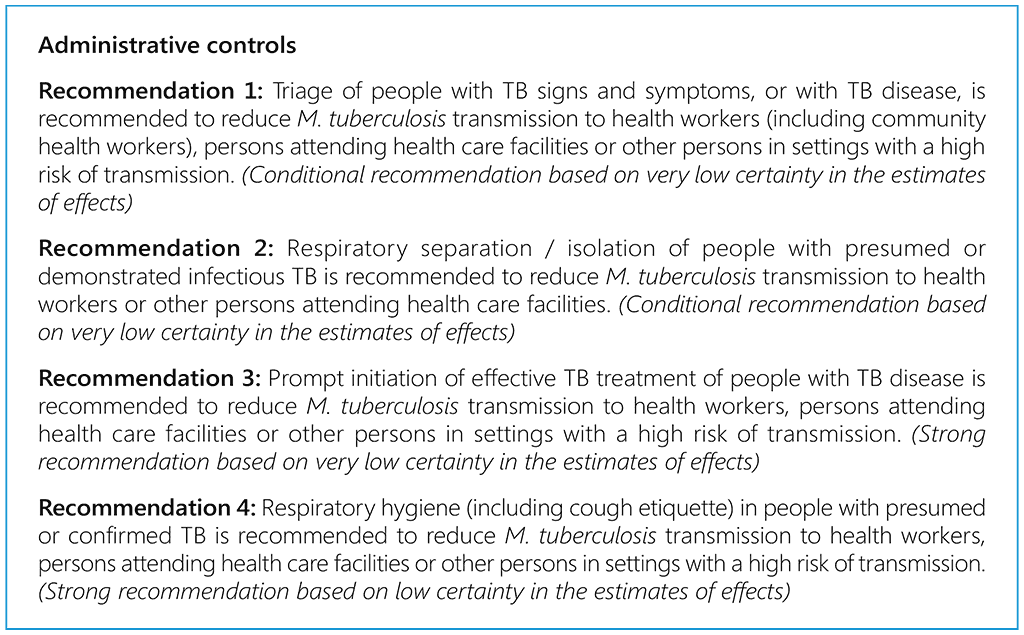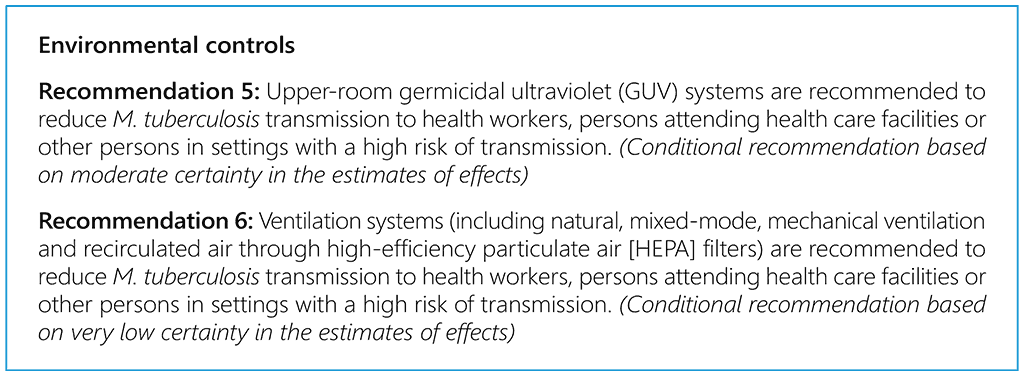Target audience
The recommendations presented here are intended to inform and contextualize TB-specific IPC interventions and activities within national-level and local-level IPC policies and protocols. Therefore, the target audience includes national and subnational policy-makers, including health system managers for TB, HIV and other disease programmes; IPC services; inpatient and outpatient facilities; IPC and quality assurance programmes; associations of affected groups; managers of congregate settings and penitentiary facilities; and occupational health and other relevant stakeholders.
 Feedback
Feedback


